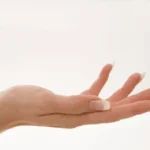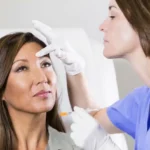
Botulinum toxin type A is a neurotoxin that acts by inhibiting the release of the neurotransmitter acetylcholine at nerve terminals at the neuromuscular junction. As a result, local paralysis is induced, relaxing the muscle into which it is injected. Botulinum toxin also acts on parasympathetic postganglionic cholinergic fibres, making it an effective treatment for hyperhidrosis and hypersalivation. Preliminary studies on the effects of botulinum toxin on conditions like as myokymia, bruxism, and anal fissure have also produced promising results. While primarily known as a cosmetic treatment for wrinkle correction, other potential therapeutic uses for this toxin has emerged in recent times in conditions associated with excessive or dyssynergic muscle contraction, pain, and hypersecretion of glands.An interesting recent discovery uncovered another aspect of Botulinum toxin: it was also found to have pain-relieving effects, which suggests that botulinum toxin has an impact on pain mechanisms. These were first discovered after reports of significant pain reduction were found in patients with cervical dystonia. While the precise mechanism by which this occurs has not been elucidated, current findings suggest that the analgesic properties of this botulinum toxin are attributed to its ability to selectively weaken painful muscles and disrupt the spasm-pain cycle. It was originally thought that the decrease in pain was brought on by reduced muscle hyperactivity, but it has since been shown through animal studies that botulinum toxin confers a direct analgesic effect. This discovery has led to novel indications for the medication, including in pain-related disorders like myofascial pain, neuropathic pain, migraine, headaches, and chronic lower back pain.
Botulinum toxin is commonly used in Asia to contour the lower face and is useful for the treatment of masseter hypertrophy. This treatment is particularly popular in the region because Asian women prefer an ovoid v-shaped jaw to the square shaped face.
Diagnosing hypertrophy
Ensure that the condition is properly diagnosed before providing treatment for masseter hypertrophy. Differential diagnoses for swelling at the angle of the mandible could exist, including compensatory hypertrophy (due to hypotrophy or hypoplasia in the contralateral side), masseter tumour, masseter muscle intrinsic myopathy, parotid tumour, salivary gland disease, parotid odontogenic problems, neoplasms of soft tissues, and inflammatory disease.
The classic signs and symptoms of masseteric hypertrophy include accompanying bruxism and frequent clenching of the jaw resulting in tooth wear, fracturing of the teeth and restorations, masticatory muscle pain, toothache, tension-type headache, and temporomandibular joint pain.
The masseter muscle is a parallelogram-shaped facial muscle connected to the mandible and the cheekbone. It is involved in mastication, or the chewing of solid foods. Masseter muscles are positioned lateral to the mandibular ramus. As such, they play an important role in facial aesthetics. Masseter muscles that are hypertrophied or enlarged have the effect of altering facial lines, which may cause potentially undesirable aesthetic features like a square jaw (which is considered to appear masculine) or asymmetry.
First described in 1880 by Legg, masseter hypertrophy is a relatively rare disorder primarily characterized by enlargement of one or both masseter muscles. The condition is asymptomatic; patients usually seek treatment due to the negative effects it has on their aesthetics, especially if there is prominent asymmetry due to the enlargement of only one side. Masseter muscle hypertrophy may also be caused by dietary habits, chewing gum, or teeth grinding.
The well-defined jaw is aesthetically pleasing. That being said, a square-shaped jaw, or one that is not proportionate with the other facial features, as seen in cases of severe unilateral hypertrophy and masseter hypertrophy, can be a cause of concern for the patient. There is also an ethnic and cultural aspect to this: Asian women idealize a delicate, oval, and feminine face shape. However, Korean women tend to have a wide jaw bone. Furthermore, the hard and rough food that makes up their diet plays a role in developing and enlarging masseter muscles. When coupled together with the belief that particular facial features can cause good or bad luck, these factors lead to a rise in demand for lower face remodelling treatments.
How to treat masseter hypertrophy
An enlarged masseter muscle will not produce any symptoms, hence treatment for this condition is purely for aesthetic improvement. Surgery to contour the angles of the jaw is an option in treating masseter hypertrophy; this entails partial removal of the masseter muscle, sometimes accompanied with osteotomy to reduce the thickened bone. However, as with any other surgical approach, treating masseter hypertrophy in this manner is invasive and runs the risk of complications like hematoma, infection, nerve injury, uneven contour lines, facial nerve paralysis, trismus, asymmetric resection, and sequelae from general anaesthesia. In addition, the patient will have to undergo a long recovery period.
Treating enlarged masseter muscles can also be achieved with botulinum toxin injections. In many cases, this approach is preferred because it is non-invasive, convenient, and has no needed recovery time. Treatment of masseter hypertrophy using botulinum toxin was first described by Moore and Wood in 1994. Since then, numerous studies have assessed the use of botulinum toxin for this indication and have concluded that these injections present a viable alternative to surgery, produce few side effects, and have a reduced recovery time.
The progression of botulinum toxin treatment roughly follows five stages:
• Muscle softening (in week 1);
• Becoming noticeably thinner (weeks 2–4)
• Maximum treatment effect (weeks 10–12);
• Recurrent action (week 12 and beyond);
• And recurrent muscle volume (week 16 and beyond).
Bruxism refers to the involuntary habit of teeth grinding, usually while asleep. It has the unfortunate effects of pain, headaches, jaw problems, and tooth damage. While few studies have been done to support treatment of bruxism with botulinum toxin (Botox) injections, studies that were conducted showed promising results, with a decrease in the frequency of bruxism events, reduced pain, and high levels of patient satisfaction. The mechanism by which botulinum toxin works to improve bruxism has not yet been elucidated, however evidence gathered to date suggests that it may have a direct anti-proprioceptive effect on the nerves, direct effects at the neuromuscular junction, blockage of the transmission of afferent neuronal signals, and inhibition of the release of various neuropeptides and neuromodulators.
Conclusion
Botox treatment has been shown to be a non-invasive, safe, and effective treatment for masseter muscle hypertrophy and lower face contouring. It is also effective in the treatment of bruxism, when used in addition to standard therapy. However, there are some issues to keep in mind when discussing this treatment option with potential patients, such as the likelihood of immune resistance from repeat injections as well as long-term cost effectiveness of this treatment.
Aesthetic medicine products are developed and regulated to meet stringent safety and efficacy standards. They are typically administered by trained healthcare professionals such as dermatologists, plastic surgeons, and specialized nurses in clinical settings. These products aim to provide effective solutions for cosmetic enhancement, skin rejuvenation, and overall aesthetic improvement, contributing to both physical appearance and self-confidence.
Key categories of aesthetic medicine products include:
-
Injectables: This category includes products such as dermal fillers, botulinum toxins (e.g., Botox), and collagen stimulators. These injectables are used to smooth wrinkles, add volume, and improve facial contours.
-
Skin Rejuvenation Treatments: Products like chemical peels, microdermabrasion systems, and laser devices are used to improve skin texture, reduce pigmentation irregularities, and enhance overall skin tone.
-
Skincare Products: These include medical-grade cleansers, moisturizers, serums, and topical treatments containing active ingredients like retinoids, antioxidants, and growth factors. They are formulated to address specific skin concerns such as acne, aging, and hyperpigmentation.
-
Hair Restoration Products: Medical treatments and products designed to promote hair growth and treat conditions such as male and female pattern baldness.
-
Body Contouring and Fat Reduction: Devices and products used for non-surgical body sculpting, such as cryolipolysis (cool sculpting) devices and injectable lipolytics.
-
Cosmeceuticals: High-performance skincare products that bridge the gap between cosmetics and pharmaceuticals, often containing potent ingredients with proven clinical benefits.
-
Wound Care and Scar Management: Products like silicone sheets, gels, and advanced wound dressings used to improve healing and reduce the appearance of scars.





